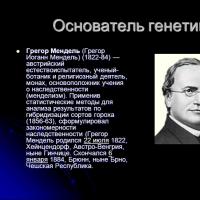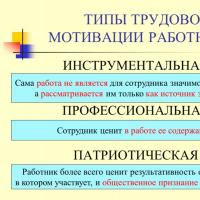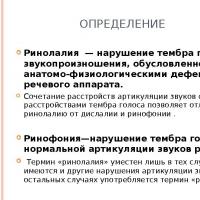We make the correct calculation of the power of a gas heating boiler. Calculation of the power of gas boilers How to choose a heating boiler by power
Despite the abundance modern options heating for private houses, most consumers stop at a traditional and proven gas boiler over the years. They are durable and reliable, do not require frequent and complex maintenance, and latitude model range allows you to choose the unit for any room.
The main characteristic of a gas boiler is its power, for the correct determination of which one should take into account a large number of factors. The comfort of the climate in the house, the efficiency of the boiler, and its service life depend on the right choice of power.
Why is an accurate calculation of the boiler power necessary?
A competent approach should be based on clear measurements that will allow you to see a complete picture of the heat loss of a private house. Buying a unit with excess capacity will lead to unreasonably high gas consumption, and, consequently, to unnecessary expenses. At the same time, the lack of boiler power can cause it to fail quickly, because in order to heat the house, it will have to work at high speeds all the time.
The easiest way to calculate the power of a gas boiler, which has been used for quite a long time, is 1 kW for every 10 square meters housing plus 15-20%. That is, from this simple formula it follows that for a private house with an area of 100 m², a boiler with a capacity of about 12 kW is required.

This calculation is very rough and is only suitable for houses with good thermal insulation and windows, low ceilings and in a fairly mild climate. Practice shows that not all private houses meet these criteria.
What data is needed to calculate the power of a gas boiler
For private houses built according to a standard project, with a ceiling height of about 3 meters, the calculation formula looks quite simple. In this case, it is necessary to take into account the building area (S) and the boiler specific power index (UMK), which varies depending on the climatic zone. He hesitates:
- From 0.7 to 0.9 kW in the southern regions of the country
- From 1 to 1.2 kW in the regions middle lane
- From 1.2 to 1.5 kW in the Moscow region
- 1.5 to 2 in the north of the country
Thus, the formula for calculating the power of a gas boiler for a typical private house will look like this:
M=S*UMK/10
80*2/10 = 16 kW
If the consumer, whose task, in addition to heating the home, will also be heating water, experts recommend adding another 20% to the figure obtained using the formula.

What other heat losses should be taken into account?
Even taking into account the climate zone cannot give a complete picture of the heat loss of a private house. Someone has double plastic windows installed, and someone else has not bothered to change the old wooden frames, someone, and someone has only one layer of brick between the street and the room.
According to averaged data, based on experts' calculations, the largest heat losses occur on non-insulated walls and amount to about 35%. A little less, 25% of the heat is lost due to a poorly insulated roof. Ideally, there should be a warm attic above the house. The bad one can take up to 15% of the heat generated by the boiler, like the old ones. wooden windows. We should also not forget about ventilation and open windows, which account for 10 to 15% of heat loss.

Thus, it turns out that the generally accepted formula is far from suitable for every residential building. For such cases, there are their own counting systems.
The concept of dissipation factor
The dissipation coefficient is one of the important indicators of heat exchange between a living space and environment. Depending on how well, there are such indicators that are used in the most accurate calculation formula:
- 3.0 - 4.0 is the dissipation factor for structures in which there is no thermal insulation at all. Most often in such cases we are talking about makeshift houses made of corrugated iron or wood.
- A coefficient from 2.9 to 2.0 is typical for buildings with low level thermal insulation. This refers to houses with thin walls (for example, one brick) without insulation, with ordinary wooden frames and simple roof.
- The average level of thermal insulation and a coefficient from 1.9 to 1.0 are assigned to houses with double plastic windows, insulation of external walls or double masonry, as well as with an insulated roof or attic.
- The lowest dispersion coefficient from 0.6 to 0.9 is typical for houses built using modern materials and technologies. In such houses, the walls, roof and floor are insulated, good windows and a well thought out ventilation system.

Table for calculating the cost of heating in a private house
The formula in which the value of the dissipation coefficient is used is one of the most accurate and allows you to calculate the heat loss of a particular building. It looks like this:
Qt \u003d V * Pt * k / 860
In the formula Qt – is the level of heat loss, V – is the volume of the room (the product of length, width and height), Pt – this is the temperature difference (to calculate it is necessary to subtract from the desired temperature in the room the minimum air temperature that can be in this latitude), k – is the scattering coefficient.
Let's substitute the numbers into our formula and try to find out the heat loss of a house with a volume of 300 m³ (10 m * 10 m * 3 m) with an average level of thermal insulation at a desired air temperature of + 20 ° C and a minimum winter temperature of - 20 ° C.
300*48*1,9/860 ≈31,81
Having this figure, we can find out what power the boiler needs for such a house. To do this, the obtained value of heat loss should be multiplied by a safety factor, which is usually from 1.15 to 1.2 (the same 15-20%). We get that:
31, 81* 1,2 = 38,172
Rounding the resulting number down, we find the desired number. To heat a house with the conditions we set, a boiler of 38 kW is required.
Such a formula will allow you to very accurately determine the power of the gas boiler required for a particular house. Also, to date, a wide variety of calculators and programs have been developed that allow you to take into account the data of each individual building.
Calculation of the heating boiler power, in particular gas boiler, it is necessary not only to select boiler and heating equipment, but also to ensure comfortable functioning heating system in general and the elimination of unnecessary operating costs.
From the point of view of physics, only four parameters are involved in the calculation of thermal power: the air temperature outside, the required temperature inside, the total volume of the premises and the degree of thermal insulation of the house, on which heat losses depend. But in fact, everything is not so simple. The outdoor temperature varies with the seasons, the requirements for indoor temperature are determined by the mode of living, the total volume of the premises must first be calculated, and the heat loss depends on the materials and construction of the house, as well as the size, number and quality of windows.
Calculator of gas boiler power and gas consumption for the year
The calculator presented here for the power of a gas boiler and gas consumption for a year can greatly facilitate your task of choosing a gas boiler - just select the appropriate field values and you will get the required values.
Please note that the calculator calculates not only the optimal power of a gas boiler for heating a house, but also the average annual gas consumption. That is why the “number of residents” parameter was introduced into the calculator. It is necessary in order to take into account the average gas consumption for cooking and getting hot water for domestic needs.
This parameter is relevant only if you also use gas for the stove and water heater. If you use other appliances for this, for example, electrical ones, or even don’t cook at home and do without hot water, put zero in the “number of residents” field.
The following information was used in the calculation:
- duration of the heating season - 5256 hours;
- duration of temporary residence (summer and weekends 130 days) - 3120 hours;
- the average temperature for the heating period is minus 2.2°C;
- the air temperature of the coldest five-day period in St. Petersburg is minus 26°C;
- soil temperature under the house during the heating period - 5 ° C;
- reduced room temperature in the absence of a person - 8.0 ° C;
- insulation of the attic floor - a layer of mineral wool with a density of 50 kg / m³ and a thickness of 200 mm.
To ensure comfortable living in the house in winter, the boiler must produce enough heat energy to fully compensate for the heat loss of the building. In addition, it is necessary to provide a certain power reserve in case of severe cold or an increase in the area of \u200b\u200bthe building. To calculate the power of the boiler, you need to take into account quite a few factors. In heat engineering, such a calculation is one of the most difficult.
There are many calculations of the heating system, namely the power of the boiler - one of the most difficult
The need to calculate the heat transfer of the boiler
Whatever materials a building is made of, it constantly releases heat to the outside. The heat loss of the house for each room may differ and depend on the materials of construction and the degree of insulation. If you take the calculations seriously, then it is better to entrust such work to specialists. Then, in accordance with the results obtained, a boiler is selected.
It is not very difficult to independently calculate the heat loss of a building, but many factors must be taken into account. The easiest way to solve the problem is with the help of a special device - a thermal imager. This device small sizes, which displays the actual heat loss of the building. At the same time, you can clearly see those places where the maximum leakage of thermal energy is observed, and take measures to correct the situation.
 You can immediately install a powerful boiler without calculations
You can immediately install a powerful boiler without calculations
Of course, you can just take a powerful boiler and not carry out any calculations. However, in such a situation, gas costs can be very high. In addition, if the boiler is underloaded, then its service life is reduced. However, the heat generator can be loaded, for example, by using it to heat previously unheated rooms. However, not a single owner of a private house wants to overpay for wasted fuel.
If the power of the heat generator turned out to be insufficient, then it will not be possible to create comfortable living conditions in the building, and the boiler itself will operate in constant overload mode. As a result, expensive equipment will fail prematurely. Thus, only one conclusion can be drawn - you need to calculate the power of the boiler for the house, thereby making a competent selection of heating equipment.
The easiest way is to independently calculate the power of the heating boiler for the area of \u200b\u200bthe house. After that, it will be possible to say exactly which heating unit is needed to heat all the premises of the building.
Basic Formula
If we analyze the results of calculations carried out over several years, then one regularity is observed - for heating every 10 m 2 of an area, it is necessary to spend 1 kW of thermal energy. This statement is true for buildings with medium insulation, and the height of the ceilings in them is in the range from 2.5 to 2.7 m.
If the building meets these standards, then it will be quite simple to determine the capacity of the heating boilers, just use a simple formula:

Latest indicator for different regions of the country has the following meanings:
- Moscow region - from 1.2 to 1.5 kW.
- The middle band is from 1 to 1.2 kW.
- South of the country - from 0.7 to 0.9 kW.
- Northern territories - from 1.5 to 2 kW.
As an example, you can calculate the power of a heat generator for a 12 × 14 m house built of brick in the Moscow region. The total area of the building is 168 m 2 . The value of specific power Wsp is taken equal to 1. As a result, W = (168 × 1) / 10 = 16.8 kW. The resulting design power of the heat generator should be rounded up. However, this is not yet a complete calculation of a gas boiler for a house by area, since it is necessary to adjust the obtained indicator.
Additional Calculations
Residential buildings with average characteristics are quite rare in practice. In order for the calculation of the power of the boiler house to be as accurate as possible, additional indicators have to be taken into account. One of them has already been considered in the main formula - the specific power spent on heating 10 m 2.
As a reference, it is necessary to use the indicator for the middle band. At the same time, in each zone, one can see a rather serious scatter of specific capacitance values. The way out of this situation is simple - the further north the area is located in the climatic zone, the higher the coefficient should be, and vice versa. For example, for Siberia with frosts of about 35 degrees, it is customary to use Wsp = 1.8.
Another factor affecting the calculation of the boiler power is the height of the ceilings. If this parameter differs significantly from the average (2.6 m), then a correction factor must be calculated. To do this, the real value must be divided by the average.
It is equally important to take into account the thermal losses of the structure when calculating. The process of heat leakage is observed in every building. For example, if the walls are poorly insulated, then losses can reach up to 35%. Thus, during the calculations a special coefficient should be used:
- A structure made of wood, foam blocks or bricks, the age of which exceeds 15 years with high-quality insulation - K = 1.
- Buildings of other materials with poorly insulated walls - K = 1.5.
- If the roof was not insulated in the building, and not just the walls - K = 1.8.
- Modern high-quality insulated houses - K = 0.6.
 Do not forget to take into account the coefficient of wood blocks
Do not forget to take into account the coefficient of wood blocks This is how the required power of the heat generator is calculated in order to make right choice equipment. However, if the boiler is also planned to be used for heating water, the obtained value of its power will have to be increased by 25%. Thus, to determine the required power of the heat generator you need to use the following algorithm:
- The total area of \u200b\u200bthe building is calculated and divided by 10. In this case, the indicator Wud does not need to be taken into account.
- The calculated value is adjusted depending on the climatic zone in which the building was erected. The indicator determined at the first stage is multiplied by the coefficient of the region.
- If the actual value of the ceiling height differs significantly from the average, this must be taken into account in the calculation. First you need to divide the actual figure by the average. The resulting coefficient is multiplied by the power of the heat generator, determined taking into account the correction for the climatic features of the area.
- The heat losses of the building are taken into account. The result obtained at the previous stage must be multiplied by the heat loss coefficient.
- If the boiler is also used for heating water, its capacity is increased by 25%.
The result obtained using this algorithm is highly accurate, and it is suitable for choosing a boiler that runs on any type of fuel.
In accordance with the norms of SNiP
You can calculate the power of equipment for the heating system at home based on building codes and rules (SNiP). This document defines the required amount of thermal energy to heat 1 m 3 of air. The volume calculation is fairly easy to do. It is enough just to determine the volume of the internal premises of the building and multiply it by the rate of consumption of thermal energy.
According to SNiP, in a panel building, 41 W of heat energy must be spent to heat 1 m 3 of air.
For a brick house, the norm is 34 watts. After performing the calculation, the resulting power value must be converted to kilowatts. It should also be recalled that in heat engineering, calculated indicators are rounded up.
If you want to get the most accurate results, then correction factor must be taken into account:
- If a heated room is located above or below the apartment, the correction is 0.7.
- If it is unheated, the coefficient will be 1.
- If the apartment is located above the basement or under the attic - the amendment will be 0.9.
You also need to take into account the number of external walls in the room. When only one wall goes out, the coefficient will be 1.1, with two - 1.2, three - 1.3. Thus, the calculation of a boiler for heating a house can be calculated by the total volume of the building or its area. Whichever method is chosen, the process is not very complex. Everything necessary calculations can be carried out by anyone who does not have special knowledge.
When choosing a boiler, it is sometimes difficult to determine its compliance with the heating requirements of a particular house. It seems that there is data on the size, internal volume. But this is not enough. The modern definition requires knowledge of the heat loss characteristic of this house. It is with heat losses that the possibility of choosing the power of the future boiler is associated, which should compensate for them in the course of its work.
Incorrectly selected boiler power leads to additional fuel costs(gas, solid and liquid). Each option will be discussed below, but for now it must be taken into account that, as a first approximation, insufficient boiler power leads to a low temperature in the heating system, due to its slow and insufficient heating. Power that exceeds the required leads to the operation of the system in a pulsed mode. It causes a sharp increase in gas consumption, wear of the gas valve. The right choice of boiler power and calculation of the heating system can help reduce heating costs.
Method for calculating heat losses
Calculation of heat losses is carried out according to certain methods, different from the climatic zone of the country. Having such calculations on hand, it is much easier to navigate in the choice of all the devices of the future heating system. The abundance of incoming data, basic and auxiliary, as well as the formalization of calculations, made it possible to introduce automation and carry them out using computer programs . Thanks to this, such calculations have become available for individual execution on the websites of construction companies.
Of course, only a specialist can determine the exact results. But an independent determination of the magnitude of heat loss will give quite visible results with the determination of the required power. By entering the data requested by the program, according to the parameters of the house(cubic capacity, materials, insulation, windows and doors, etc.), after performing the proposed actions, the value of heat losses is obtained. The resulting accuracy is sufficient to determine the required power of the boiler.
Using house ratios
The old way of determining the amount of heat loss was use of house coefficients of 3 types for an individual calculation of the power of a gas boiler using a simplified method:
- from 130 to 200 W / m2 - houses without thermal insulation;
- from 90 to 110 W / m2 - houses with thermal insulation, 20-30 years;
- from 50 to 70 W/m2 - heat-insulated house with new windows, 21st century.
Knowing the value of your coefficient and the area of \u200b\u200bthe house, by multiplying, the desired value is obtained. The required power was even easier to determine during the Soviet era. Then it was believed that 10 kW per 100 meters of area is just right.
However, today such accuracy is no longer enough.
What affects the power of the boiler
If it is too small, then a powerful boiler is on solid fuel will not “burn out” the remaining fuel due to lack of air supply, the chimney will quickly become clogged, and fuel consumption will be excessive. Boilers for gas or liquid fuel(VT) will quickly heat a small amount of water and turn off the burners. This burning time will be the shorter, the more powerful the boilers. In such a short time, the removed combustion products will not have time to warm up the chimney, and condensate will accumulate there. Acids formed quickly will render unusable like a chimney, and the boiler itself.
 Long burner operation allows the chimney to warm up and the condensate to disappear. Frequent switching on of the boiler leads to wear of it and the chimney, as well as increased fuel consumption due to the need to warm up the chimney channel and the boiler itself. To calculate the power of a liquid fuel (diesel) boiler, you can use calculator program, taking into account many of the features described above (designs, materials, windows, insulation), but express analysis can be performed using the above method.
Long burner operation allows the chimney to warm up and the condensate to disappear. Frequent switching on of the boiler leads to wear of it and the chimney, as well as increased fuel consumption due to the need to warm up the chimney channel and the boiler itself. To calculate the power of a liquid fuel (diesel) boiler, you can use calculator program, taking into account many of the features described above (designs, materials, windows, insulation), but express analysis can be performed using the above method.
It is believed that 1-1.5 kW of boiler power is needed to heat 10 square meters of a house. DHW is not taken into account in a house with high-quality insulation, without heat loss, with an area of 100 sq. m. Coefficients for the level of insulation used to calculate the required power of the boiler ZhT:
- 0,11 - apartment, 1st and last floors of an apartment building;
- 0,065 - an apartment in an apartment building;
- 0,15 (0,16) - private house, wall 1.5 bricks, without insulation;
- 0,07 (0,08) - private house, wall 2 bricks, 1 layer of insulation.
For calculation, an area of 100 sq. m. is multiplied by a factor of 0.07 (0.08). The received power is 70-80 W per 1 sq. m. area. The boiler power is reserved by 10–20%, for hot water supply the reserve increases to 50%. This calculation is very approximate.
Knowing the heat losses, we can say about the required amount of heat generated. Usually, for comfort in the house, the value is taken +20 degrees Celsius. Since there is a period of minimum temperatures in the year, the demand for heat increases sharply on these days. Taking into account the periods when temperatures fluctuate around the average for the winter, the boiler power can be taken equal to half of the previously obtained value. In this case, compensation for heat losses due to other heat sources is taken into account.
Solving the problem of excess power
 In the case of low heat demand, the boiler output becomes obviously high. There are several solutions. Firstly, during this period, the use of 4-way mixing valves in hydraulic systems is proposed. Can be applied thermohydraulic distributor. That allows you to regulate the heating of water without changing the boiler power, due to valves and circulation pumps. This ensures optimal operation of the boiler.
In the case of low heat demand, the boiler output becomes obviously high. There are several solutions. Firstly, during this period, the use of 4-way mixing valves in hydraulic systems is proposed. Can be applied thermohydraulic distributor. That allows you to regulate the heating of water without changing the boiler power, due to valves and circulation pumps. This ensures optimal operation of the boiler.
Due to the high cost of the method, it is considered a budget option multi-stage burners in inexpensive gas and LT boilers. With the onset of the specified period, a stepwise transition to reduced combustion reduces the boiler power. A variant of smooth transition is modulation or smooth adjustment, commonly used in wall-mounted gas appliances. This possibility is almost not used in the designs of LT boilers, although a modulating burner is a more advanced option than a mixing valve. Modern boilers on pellets are already equipped power control system and automatic fuel supply.
For the inexperienced consumer the presence of a modulating burner system may seem like a sufficient reason to abandon the calculation of heat losses at home, or at least limit themselves to an approximate definition. By no means, the presence of such a function cannot solve all the problems that arise: if, when the boiler is turned on, it starts to work at maximum power, then after a while the machine reduces it to the optimum.
At the same time, a powerful boiler in a small system has time heat water and turn off even before the transition of the modulating burner, I needed the desired level of combustion. The water cools down quickly enough, the situation will repeat itself “to a blot”. As a result, the operation of the boiler takes place in impulses as with a single-stage powerful burner. The change in power can reach no more than 30%, which will eventually lead to failures with a further increase in the external temperature. It is worth remembering that it is about relatively cheap devices.
In more expensive condensing boilers, the modulation limits are wider. ZhT boilers can cause tangible difficulties when trying to use in small and well-insulated houses. In such a house, about 150 sq. m, 10 kW of power is enough to cover heat losses. In the line of ZhT boilers offered by manufacturers, the minimum power is twice as much. And here an attempt to use such a boiler can lead to a situation even worse than that described above.
ZhT (diesel fuel) is burning in the furnace, everyone saw a black plume behind an unheated and unregulated diesel engine. And here in the products of incomplete combustion, soot falls abundantly, it and unburned products are thoroughly clog the combustion chamber. And now the brand new boiler needs to be urgently cleaned so as not to reduce the efficiency and restore heat transfer. And after all, if you first select the correct power of the boiler, there would not be all the problems described.
In practice, you should choose the boiler power slightly lower than the heat losses of the house. Popularity and practical use have gained boilers with TsOGVS, i.e. double-circuit, heating water for heating and hot water supply. And among these two functions, the required capacity for CH is less than for DHW. Of course, this approach made the choice of boiler power more difficult.
The method of obtaining hot water in a 2-circuit boiler - flow heating. Since the time of contact (heating) of running water is insignificant, the power of the boiler heater must be high. Even for low-power double-circuit boilers, the DHW system has 18 kW of power and this is only the minimum, which makes it possible to take a normal shower. The presence of a modulating burner in such a device will make it possible to work with a minimum power of 6 kW, almost equal to the heat loss in a 100-meter house with high-quality thermal insulation.
 V real life, average, for the heating season, the needs will be no more than 3 kW. That is, although the situation is not ideal, it is acceptable. A way to reduce the required capacity of the DHW system is to use a DHW storage tank. And it is very similar to a single-circuit boiler equipped with a boiler. The boiler connected through the heat exchanger to the boiler has a capacity at least 100 liters. This is a minimum, designed for several points of water intake and their simultaneous use.
V real life, average, for the heating season, the needs will be no more than 3 kW. That is, although the situation is not ideal, it is acceptable. A way to reduce the required capacity of the DHW system is to use a DHW storage tank. And it is very similar to a single-circuit boiler equipped with a boiler. The boiler connected through the heat exchanger to the boiler has a capacity at least 100 liters. This is a minimum, designed for several points of water intake and their simultaneous use.
This scheme allows reduce boiler output combined with a water heater. As a result, the task is completed and the boiler power is sufficient to compensate for heat losses (CH) and hot water (boiler). At first glance, as a result, during the operation of the boiler to the boiler, to the heating system hot water will not go and the temperature in the house will drop. In fact, for this to happen, the boiler must turn off for 3 - 4 hours. The process of replacing heated water from the boiler with cold water occurs gradually. The practice of using heated water says that even draining half the volume, which is 50 liters at a temperature of about 85 degrees Celsius and the same amount of cold to use, leads to the remainder in the tank of half the volume of hot and the same amount of cold. The heating time will be no more than 25 minutes. Since such a volume is not consumed at a time in the family, the heating time of the boiler will be much less.
An example of determining the boiler power
An approximate method for determining the power of a gas boiler based on its specific power (Rud) per 10 sq. m and taking into account the conditions of climatic zones, heated area - P.
- 0.7−0.9 - south;
- 1.2−1.5 kW - middle band;
- 1.5−2.0 kW - north
Boiler power is determined Pk \u003d (P * Rud) / 10; where Rud = 1;
The volume of water in the system Osist \u003d Pk * 15; where 1 kW is accepted for 15 liters of water
So for the house from the example with a LT boiler, in the north, the calculation will look like this:
Pk \u003d 100 * 2/10 \u003d 20 (kW);
Advantages and disadvantages of gas boilers
The boiler is the main part of the heating system. It generates the amount of heat necessary for comfortable conditions and provides hot water. If there is a gas pipeline near the house, the best option will install a gas boiler. It has its pros and cons. The advantages of gas equipment are efficiency, high power, ease of operation, medium-sized boilers can be installed even in the kitchen, compact size and environmental friendliness (the boiler emits the least amount of harmful substances into the atmosphere).
The disadvantages of such a boiler can be considered the requirement for a special permit for its installation, the risk of gas leaks, the presence of certain requirements for the room in which the boiler will be located, and the presence automatic shutdown gas leak or insufficient ventilation. In any case, if you decide to install gas heating equipment, you will have a question about how to calculate the power of a gas boiler.
Calculation of a gas boiler: the first method
Correctly calculated boiler power is a guarantee of reliable and efficient operation of the heating system. The basis of the calculation is the provision of a house optimum temperature. Most often, the main source of heat in a house or cottage is the boiler. In order to calculate the necessary parameters and record the data obtained, you will need the following materials and tools:
- roulette;
- paper, pen;
- calculator.
The efficiency of the heating system depends entirely on the power of the boiler. Excessive power leads to excessive fuel consumption, and insufficient power leads to the inability to maintain the desired temperature in the house, especially in winter time of the year. The power of the gas boiler is determined based on the following parameters: the specific power of the unit per 10 m2, taking into account the climatic conditions of a certain region (Wsp), the area of heated premises (S). Specific power, depending on the climatic zone, can take on different values: 1.2-1.5 kW - for central Russia, 0.7-0.9 - for the southern regions and 1.5-2.0 kW - for the northern areas.
The boiler power is calculated using the formula Wcat = (S * Wsp) / 10. For convenience of calculation, unit is most often taken as specific power. The power is accordingly calculated as 10 kW per 100 m2. Another important parameter is the volume of coolant circulating in the system (Vsyst). When calculating, use the proportion 1 kW: 15 l (unit power: liquid volume. The formula will look like this: Vsyst \u003d Wcat 15
As an example, the calculation of the power of a gas boiler and the required volume of coolant for heating a house of 100 m2 located in the northern region will be given. The maximum specific power for the northern regions is 2 kW, then:
- Wcat \u003d 100 2 / 10 \u003d 20 kW;
- Vsyst \u003d 20 15 \u003d 300 l.
In order to make the calculation more accurate, you can use a special calculator that also takes into account the desired constant temperature in the house, the lowest average annual temperature, room parameters, wall thickness and material, type of ceilings and number of windows.
Before purchasing a boiler, it is necessary to carefully study it. specifications and technical data sheet.
So you will be sure of its thermal power, because in some cases, instead of the power given to the system, the technical characteristics of the burner may be indicated, which are of no interest to consumers.
The second way to calculate the power of equipment
When choosing a boiler, it is necessary to take into account information about the heat losses of the room, which will need to be compensated. They need to be calculated. This is usually done by the architect who designs the house. Using this data, you can select the boiler of the required power. You can calculate heat losses using special programs with advanced features, with the help of which even those who have never dealt with design can make calculations.
If there is no house project and heat loss calculations, they can be determined independently using a simplified calculation method. Questionnaires are accurate enough for small private houses. They contain questions regarding the material and thickness of the walls, the number and size of windows and the type of double-glazed windows. For each question, there are several possible answers. Each answer has its own number.
http:
The boiler is calculated using these numbers, the result is a value that reflects the heat loss of the house. It is quite suitable for determining the power of the unit. It will take only a few minutes to fill out the questionnaire and make calculations. Most simple method calculation of heat losses is their calculation using a conditional coefficient having the following values:
- from 130 to 200 W / m2 - houses without thermal insulation;
- from 90 to 110 W / m2 - houses with thermal insulation, built 20-30 years ago;
- from 50 to 70 W / m2 - modern thermally insulated houses with new windows, built in the 21st century.
To determine heat loss, the coefficient is multiplied by the area of the house, however, these calculations are approximate, they do not take into account the number and size of windows, the location and shape of the house, which affect heat loss. This calculation is not the main one when choosing a boiler.
http:
The calculated heat loss reflects the maximum heat demand of the house, necessary to maintain a normal temperature. The greatest need for heat occurs at temperatures below -22°C. Such frosts usually occur several days a year, and sometimes do not occur at all for several years. And the boiler must work all heating season when the average temperature is zero. In this case, heating the house will require half the estimated capacity of the equipment. It is not worth buying a boiler of greater power, this leads not only to unnecessary expenses, but also lowers its efficiency. The lack of heat in extreme cold can be compensated by other appliances, such as a fireplace or an electric heater.




 Presentation "Improving reading technique"
Presentation "Improving reading technique" Biology presentation on the topic: "Medical genetics
Biology presentation on the topic: "Medical genetics Lesson outline and presentation on history on the topic "from the Middle Ages to modern times"
Lesson outline and presentation on history on the topic "from the Middle Ages to modern times" Presentation on the topic "Development of a system of motivation and stimulation of labor"
Presentation on the topic "Development of a system of motivation and stimulation of labor" Presentation on speech therapy "open rhinolalia" The examination of sound pronunciation should include two aspects
Presentation on speech therapy "open rhinolalia" The examination of sound pronunciation should include two aspects An excerpt characterizing Maklakov, Nikolai Alekseevich
An excerpt characterizing Maklakov, Nikolai Alekseevich The sexiest lips: scientists calculated the shape and volume of the Sponges of girls
The sexiest lips: scientists calculated the shape and volume of the Sponges of girls